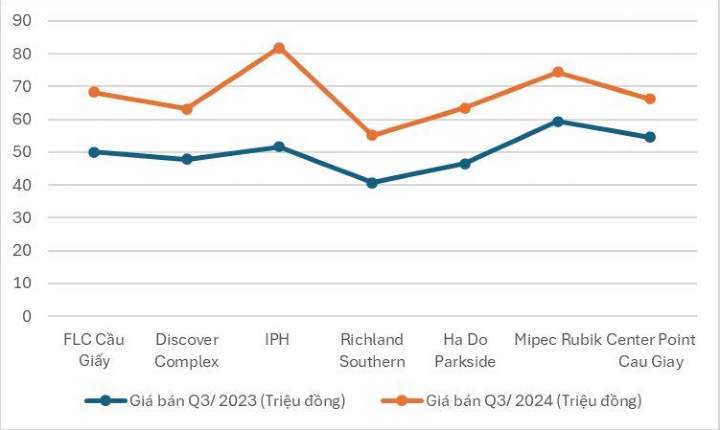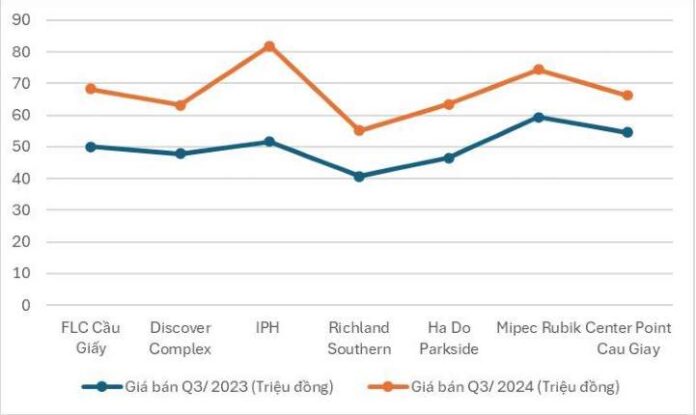TOD Model: The Ultimate “Leverage” for Exceptional Real Estate Value Appreciation
In the context of modern urban planning, the Transit-Oriented Development (TOD) model plays a central role, offering a multi-functional transportation network that minimizes travel time between different areas of the city.
This approach is considered optimal for building a modern, sustainable, and livable urban environment. Within a radius of 400-800 meters from public transportation hubs, the TOD model creates high-density areas that integrate various functions, including residential, office, commercial, and public services. As a result, this area becomes vibrant and bustling, attracting commercial activities and fostering economic and social development.
The TOD model also encourages the use of public transportation and discourages private vehicles, thereby reducing traffic congestion and environmental pollution. Moreover, it significantly optimizes travel time and effort. With metro trains reaching speeds of up to 110 km/h, commuters can travel 10 kilometers in just 10 minutes, compared to an hour-long journey during peak traffic hours on congested roads.
Research indicates that real estate values within a 3-kilometer radius of metro stations tend to appreciate at a rate that is 15-20% higher compared to other locations.

Apartment prices in Cau Giay, Hanoi, along Metro Line 3, Q3/2023 compared to Q3/2024. Source: Batdongsan.com.vn
For instance, in Singapore, apartments within a 400-meter radius of the Circle Line stations appreciated by approximately 15% compared to those outside this range when the line became operational in 2012. In Kuala Lumpur, Malaysia, the average apartment prices (2017-2018) within an 800-meter radius of train stations were 30% higher than the city’s average. In Bangkok, real estate prices near metro lines are expected to increase by 7%-21%, depending on the proximity to the stations.
In major cities like Hanoi and Ho Chi Minh City, the rule of “the closer to the metro, the higher the value” has been clearly evident. In Ho Chi Minh City, apartment prices along Metro Line 1 (Ben Thanh – Suoi Tien) have consistently risen since their launch, with increases ranging from 35%-70% depending on the location, with some real estate projects even doubling in value between 2015 and 2023.
In Hanoi, the average apartment prices in the Cau Giay district – an area benefiting from Metro Line 3 – increased by over 40% within a year from Q3/2023 to Q3/2024 for properties within a 500-meter radius of the metro line, while areas farther from the line experienced more modest increases of 25%-35%. Thus, the proximity to metro stations has resulted in a 5%-15% higher appreciation rate compared to the overall market.
“Close to Home, Close to the Lane” in West West Lake
West West Lake boasts well-planned road infrastructure with major routes such as Ring Road 2, Ring Road 2.5, Ring Road 3, and West Thang Long Avenue. Now, with the upcoming metro lines, the area is poised for a significant leap in real estate values.
Hanoi currently has two operational metro lines (Line 2A and Line 3). According to the approved master plan, the city will further develop 301 kilometers of the total 398 kilometers of railway in the future, including the prominent Lines 2, 4, and 6 passing through the West West Lake area.

Key Metro Lines Boosting Real Estate Values in West West Lake
Metro Line 2 (Nam Thang Long – Tran Hung Dao) is a critical line spanning 11.5 kilometers and directly connecting Nam Thang Long to the historic Tran Hung Dao street in the old quarter. With stations C1 and C2 located in West West Lake, this project, boasting an estimated investment of up to VND 35,000 billion and expected completion by 2029, will significantly reduce travel time between West West Lake and the city’s heart at Hoan Kiem district, offering unprecedented convenience to residents.
Metro Line 6 (Noi Bai – Ngoc Hoi), slated for completion by 2030, will feature a station on Nguyen Dinh Tu Street, providing a modern transportation corridor connecting the western part of the city with its center and southern areas. Notably, this metro line will offer a 20-minute commute to Noi Bai International Airport and a mere 10-minute ride to Ho Tay, Hoan Kiem Lake, and other inner-city destinations.

Jade Square is a project that directly benefits from the metro lines in West West Lake
With the upcoming metro lines 2 and 6, the “close to home, far from the lane” adage will no longer apply to West West Lake real estate. Properties near metro stations will enjoy reduced travel times to other parts of the city, making them “close to home, close to the lane.”
These metro lines will not only transform the urban landscape and enhance the quality of life for residents but also reshape the real estate value structure around the stations. Ideally located in West West Lake, the luxury apartment complex Jade Square will be just a 5-10 minute commute to the Nguyen Dinh Tu station of Metro Line 6 and the Nam Thang Long station of Metro Line 2, offering exceptional living spaces and superior growth potential. Jade Square is expected to be one of the most sought-after projects in the West West Lake area this year.
















